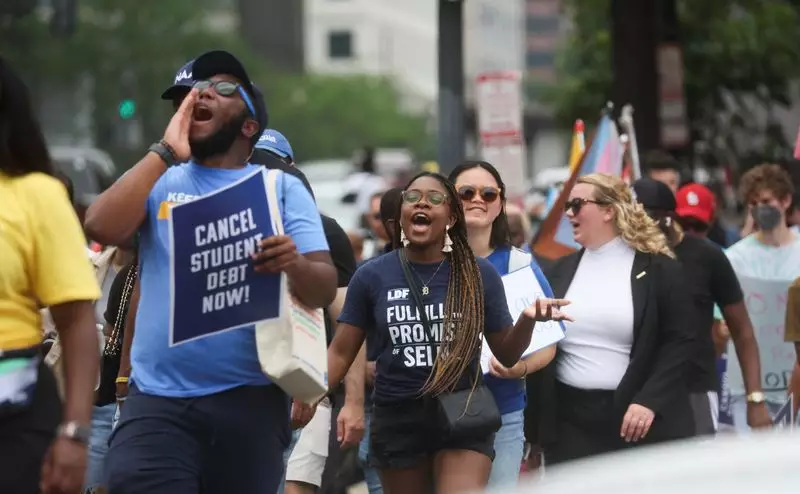President Joe Biden recently announced plans to ease student debt for millions of Americans, a move aimed at addressing a key issue for young voters. The plans include canceling up to $20,000 of interest for borrowers, which is estimated to benefit at least 23 million Americans. Progressive voters have long urged the White House to address student loan debt, with concerns about Biden’s foreign policy on the war in Gaza and his perceived failure to provide sufficient debt forgiveness.
In addition to canceling interest for borrowers, Biden’s new plans include automatically canceling debt for those eligible for certain forgiveness programs, as well as those who entered repayment decades ago, enrolled in low financial value programs, or are experiencing hardship. The goal is to provide relief to as many borrowers as possible and stimulate the economy. If re-elected in November, Biden also expressed his commitment to making community college free.
Republicans have criticized Biden’s student loan forgiveness approach, calling it an overreach of his authority and unfair to non-college-educated borrowers who receive no relief. Senator Bill Cassidy, in particular, described the plans as “loan schemes” that shift the burden of debt onto others without addressing the root cause of high education costs. The opposition argues that Biden’s plan is simply a ploy to garner votes before the election.
While the Biden administration has approved $146 billion in student debt relief for 4 million Americans, there are still approximately 43.4 million student loan recipients with $1.63 trillion in outstanding loans. The new plans, if implemented, could benefit more than 30 million Americans and provide much-needed relief to borrowers. Education Secretary Miguel Cardona emphasized the administration’s commitment to delivering relief quickly and efficiently.
Despite the positive intentions behind President Biden’s student debt plan, there are several criticisms that must be considered. Firstly, the plan’s focus on canceling interest for borrowers may not address the underlying issue of rising tuition costs and the burden of student loans. Secondly, the plan’s implementation may face challenges in reaching all eligible borrowers and ensuring equitable relief. Lastly, the timing of the plan’s announcement, just before the election, raises questions about the motivation behind it.
President Biden’s student debt plan represents a step towards addressing the pressing issue of student loan debt in the United States. However, it is essential to critically evaluate the effectiveness and impact of the plan, as well as consider the various criticisms and challenges it may face in implementation. Ultimately, the goal should be to provide meaningful relief to borrowers and address the root causes of the student debt crisis.

